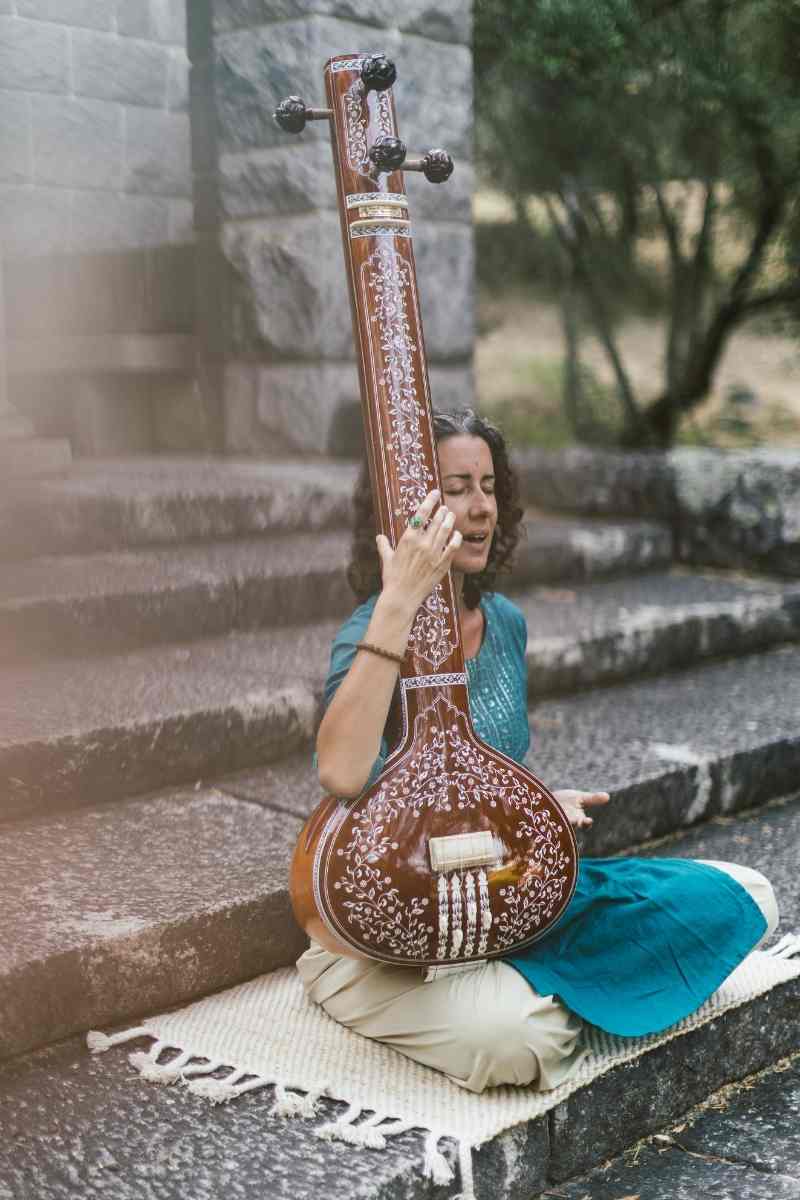
Tānpūrā and the Voice
Throughout the study of dhrupada (from Sanskrit dhruvapada: dhruva “immutable, fixed” and pada “word, verse”), the connection with the tanpūrā grows ever stronger. The sound resonates within the body, and each note of the instrument echoes in the voice, and vice versa.
Here I write a little more about this wonderful instrument of contemplation.
The tānpūrā (also called tambura or tanpūrā in Sanskrit) is a traditional musical instrument from India, essential in Indian classical music, both in the northern Hindustani style and the southern Carnatic style. Its role is to create a continuous drone sound that serves as the harmonic and tonal foundation for the singer or, indeed, for other instruments. In the context of Indian classical music in general, the term used is tānpūrā (तान्पूरा) in the north and tambura/taṃbūrā in the south. Taṃbūrā comes from the Persian/Turkish tanbūr, a type of long-necked lute already known in Central Asia. Upon entering the Indian musical tradition, the name was adapted, and over time the form tānpūrā also appeared (tān = melodic phrase / vocal range, pūrā = complete).
Structure
The tānpūrā is generally made of wood and has a large resonating chamber as the base of its body, which may be carved from a single piece or made from a dried gourd. It has four or five metal strings, tuned according to the tonal center of the rāga (a melodic framework that evokes a specific emotion or state) in question.
The tānpūrā produces a continuous drone that defines the tonic (sa) and other fundamental notes. This sonic backdrop creates tonal stability, helping singers and listeners remain centered on the tonal base of the music, even during improvisations.
According to tradition, it is played throughout the entire performance, from beginning to end, without interruption.
Types of tānpūrā
There are variations depending on region and use: the large tānpūrā (or male tānpūrā) for male performers; the smaller tānpūrā (or female tānpūrā) with a higher pitch, used by female singers; the tamburī, a smaller version usually made entirely of wood and easier to transport; and the electronic tānpūrā, sometimes used in rehearsals or for less formal accompaniment.
Cultural context
More than just an instrument, the tānpūrā is regarded as the foundation of traditional Indian music and as a symbol of stability and continuity. Many musicians begin its tuning as a meditative ritual before they start to play or sing.
Conclusion
The tānpūrā is not an instrument that seeks the spotlight; its role is deeper: to maintain the śruti, the pure intonation of the voice, sustaining the flow of music like a continuous, unbroken river, and keeping both listeners and singers in constant focus and presence.


Leave a Reply